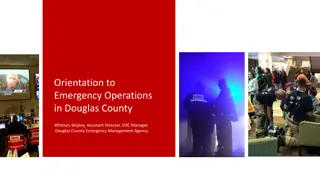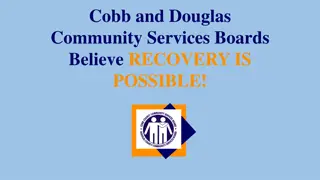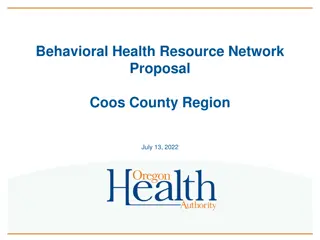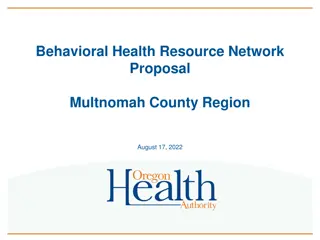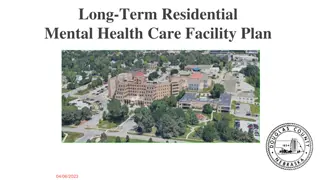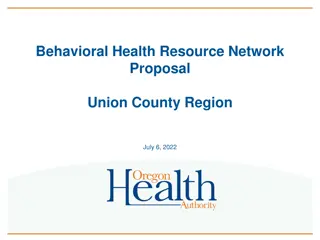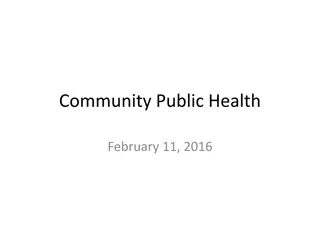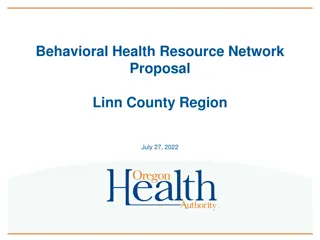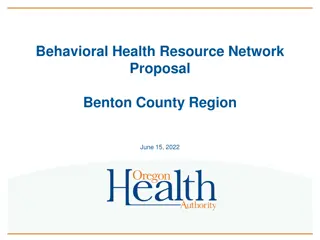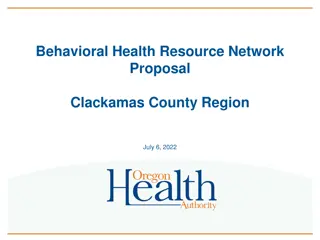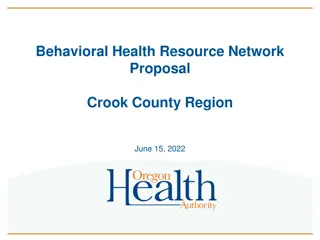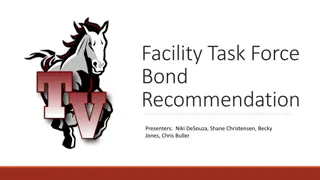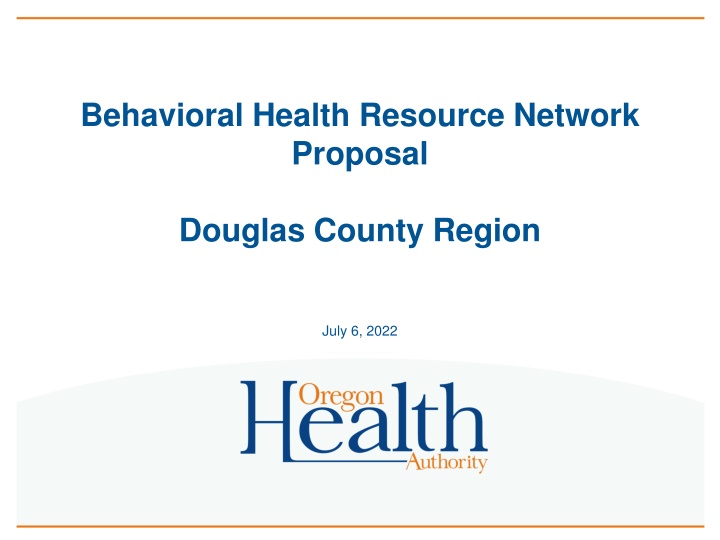
Douglas County Behavioral Health Resource Network Proposal Overview
"Explore the comprehensive proposal for the Behavioral Health Resource Network in Douglas County, including initial matrix data, budget requests, and insights on services such as SUD treatment, peer support, harm reduction, and more. Get detailed information on workforce stabilization, the Sobering Center, staff incentives, and inclusive services like Boulder Care."
Download Presentation

Please find below an Image/Link to download the presentation.
The content on the website is provided AS IS for your information and personal use only. It may not be sold, licensed, or shared on other websites without obtaining consent from the author. If you encounter any issues during the download, it is possible that the publisher has removed the file from their server.
You are allowed to download the files provided on this website for personal or commercial use, subject to the condition that they are used lawfully. All files are the property of their respective owners.
The content on the website is provided AS IS for your information and personal use only. It may not be sold, licensed, or shared on other websites without obtaining consent from the author.
E N D
Presentation Transcript
Behavioral Health Resource Network Proposal Douglas County Region July 6, 2022
Douglas County Initial Matrix SUD Treatment Peer Services Harm Reduction Supported Employment Screening Intervention Housing Adapt X X X X X Boulder Care X X HIV Alliance X X X Douglas County BHRN initially missing supported employment 2
Douglas County Initial Budget Request TTL Douglas County request Douglas County Allocation Under allocation: $8,108,622.20 $8,533,149.16 $424,526.96 3
OAC Subcommittee Concerns/Feedback Adapt: Will workforce stabilization funds be only used for positions that M110 funds such as CADCs and peer support workers? Yes, the workforce stabilization is for front line staff providing peer or SUD treatment services, including CADCs. These funds are not to be used with managers or administration staff in any way. Can we get additional information on the sobering center? The Sobering Center (SC) is a project that provides 8 beds for people who are intoxicated to safely sober up enough that they can care for themselves. They are brought to the SC instead of being booked into jail or being dropped at the emergency department (ED). It is minimally staffed but is available 24/7 and the average length of stay is about 12 hours. A person staying there is put through an intake that includes taking vitals and demographics. We use medical criteria established with our Chief Medical Officer so that if there are any indications of a medical issue they can be medically cleared at the ED before admission. They are observed at least every 15 minutes to ensure they are not developing a medical issue and to gauge their level of intoxication. Sobering Center Techs build rapport with the person staying at the SC to learn what they may want or need for services and they try to connect them to other services, including Subacute Detox, SUD residential, Outpatient SUD treatment, mental health or medical services. They are part of our Crisis Program and are housed in the building next to the Mobile Crisis Team, Detox, and the Adult SUD Residential Programs. Peers are on the SC team and work with people there to determine what they would like to seek in terms of services or connections. 4
OAC Subcommittee Concerns/Feedback Adapt, Con d: Which positions will receive the staff incentive payments? The incentives are for the peers in this grant plus CADCs and other peers in the county working for the agency. It also includes lower paid positions like Residential Assistants in the adolescent and adult residential treatment programs but does not include the RNs at Detox for example. Are all services low-barrier? Yes, all services are provided regardless of a person s ability to pay or what medical coverage they have. If we are working with a person who is intoxicated or actively using, SC, Detox, and peers working out of outpatient will work with people to help them engage in a process of getting the services they need. Boulder Care: Will Boulder Care provide technology for clients who can t afford it? Yes 5
Budget Reconciliation Grantee Original Request New Request Difference Adapt $7,323,000 $7,747,527 $424,527 HIV Alliance $575,371 $575,371 $0 Boulder Care $210,251 $210,251 $0 Total $8,108,622 $8,533,149 Allocation Under Allocation $8,533,149 $424,526 $0 $424,527 6
Additional budget considerations Adapt originally applied to provide supported employment; the OAC did not award funding because Adapt was referring this service out. Adapt increased their budget by $424,527 to provide a robust supportive, low-barrier, peer-run employment program. The funding will support three new peer positions dedicated to SE programming. Adapt also added additional housing vouchers, clothing vouchers, and bus passes to their SE program. Boulder Care removed the harm reduction provisions from their budget and will use those funds to fund technology purchase for clients who are in need. (Net change: $0) 7
Douglas County Final BHRN SUD Treatment Peer Services Harm Reduction Supported Employment Screening Intervention Housing Adapt X X X X X X Boulder Care X X X X HIV Alliance X X X 8

